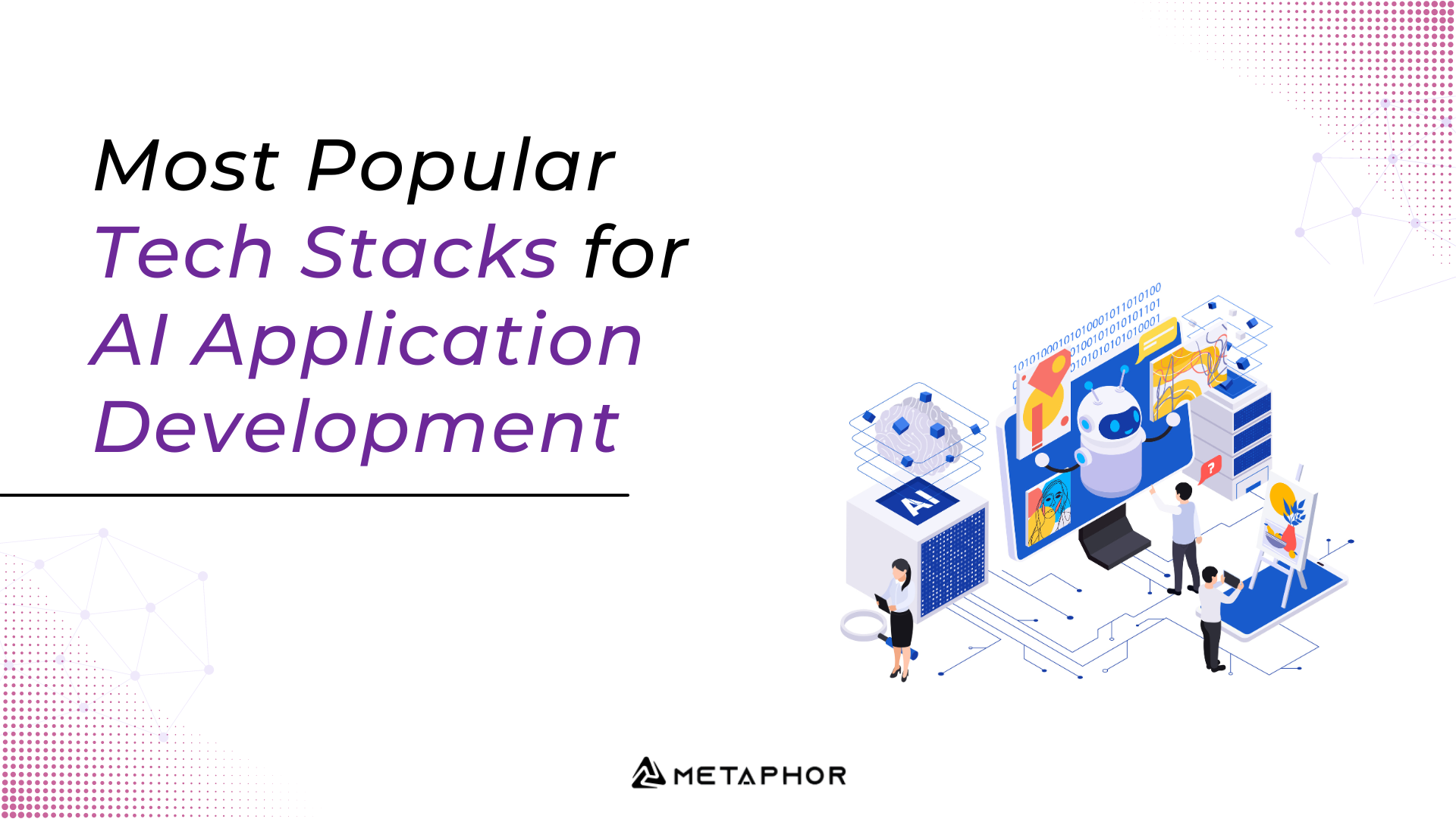The increasing demand for Artificial Intelligence (AI) and Machine Learning (ML) solutions has led to the development of various frameworks and tools that facilitate the creation of AI applications. With numerous options available, selecting the most suitable tech stack can be challenging, especially for those new to the field. In this article, we’ll delve into the most popular and widely used tech stacks for advanced AI application development, highlighting their strengths.
1. TensorFlow
TensorFlow is an open-source machine learning framework developed by Google. Released in 2015, it has become one of the most widely adopted frameworks for AI development. TensorFlow offers a vast range of tools and libraries for building, training, and deploying ML models. It supports a variety of programming languages, including Python, C++, Java, and R.
Key Features:
AutoML: TensorFlow provides automated machine learning (AutoML) tools, enabling users to build and deploy ML models with minimal expertise.
Distributed Training: TensorFlow allows for distributed training, which enables large-scale ML computations across multiple devices.
Deployment: TensorFlow has extensive deployment support, making it easy to integrate ML models into various applications.
2. PyTorch
PyTorch is another popular open-source ML framework developed by Facebook. Released in 2016, it has gained significant traction among developers and researchers due to its simplicity and ease of use. PyTorch provides a dynamic computation graph, which enables flexible and rapid prototyping.
Key Features:
Dynamic Computation Graph: PyTorch’s dynamic computation graph allows for more flexible and adaptive model building.
Modular Design: PyTorch has a modular design, making it easy to integrate with other frameworks and tools.
Extensive Libraries: PyTorch offers a range of pre-built libraries for common tasks, such as computer vision and natural language processing.
3. Scikit-Learn
Scikit-Learn is a widely used open-source ML library for Python. Released in 2007, it provides a vast range of algorithms for various ML tasks, including clustering, regression, and classification. Scikit-Learn is known for its simplicity, flexibility, and ease of use.
Key Features:
Wide Range of Algorithms: Scikit-Learn offers over 60 ML algorithms for common tasks.
Interoperability: Scikit-Learn integrates seamlessly with other frameworks and tools, such as NumPy, SciPy, and Matplotlib.
Easy Model Selection: Scikit-Learn provides tools for model selection, making it easy to compare and choose the best-performing model.
4. Spark ML
Apache Spark ML is a machine learning library built on top of Apache Spark. Released in 2014, it provides a wide range of ML algorithms for large-scale data processing. Spark ML is designed to handle massive datasets and provides a scalable and efficient solution for various ML tasks.
Key Features:
Scalable: Spark ML is designed to handle massive datasets, making it an excellent choice for large-scale ML applications.
High-Performance: Spark ML provides high-performance capabilities, enabling faster model training and deployment.
Rich Library: Spark ML offers a wide range of pre-built algorithms for common ML tasks.
5. Torch
Torch is a scientific computing framework with wide support for machine learning and deep learning. It was created at the New York University by six researchers and initially released in 2011. Main user base consists of researchers and engineer in Facebook, IBM, and hundreds of AI Labs worldwide.
Key Features:
Dynamic Computation Graph: Torch has been allowing for rapid dynamic computation for over 10 years.
First General Purpose Autograd System: In a real sense, first AutoDiff system to support full fledged Dynamic Computation were implemented there.
Out of the box, support for cloud: Most modern things came out of Torch.
6. Keras
Keras is a high-level neural networks API, capable of running on top of TensorFlow, PyTorch, Theano, and Microsoft Cognitive Toolkit. Initially released in 2015, it provides an easy-to-use interface for building and training deep learning models. Keras is widely adopted in the industry and academia due to its simplicity and flexibility.
Key Features:
Easy-to-Use API: Keras offers a high-level API for building and training deep learning models.
Extensive Pre-Built Models: Keras provides pre-built models for common tasks, such as image classification, natural language processing, and speech recognition.
Interoperability: Keras can run on top of multiple frameworks, including TensorFlow, PyTorch, and Microsoft Cognitive Toolkit.
Conclusion
The choice of tech stack for AI application development depends on various factors, including the type of project, the size of the dataset, and the desired level of complexity. In this article, we’ve discussed the most popular and widely used tech stacks for advanced AI application development, highlighting their strengths and use cases. By understanding the capabilities and limitations of each tech stack, developers and researchers can make informed decisions and accelerate their AI development journey.




